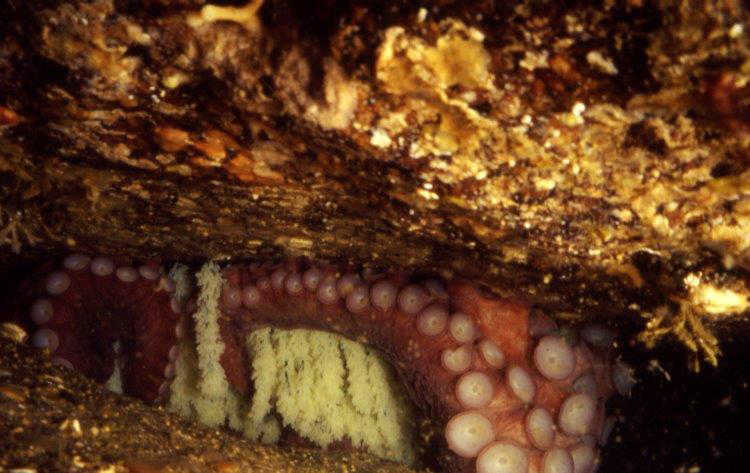Individuals of this species often reach a body weight of 100 pounds or more, but in the Gulf of Alaska, adults have an average weight between twenty and forty pounds. Individuals are sexually mature when they are three or four years old. They usually live in the subtidal zone, where they often occupy rocky dens with a ‘front yard’ paved with the hard shells of clams and crabs that the den owner has eaten. Mating occurs in late winter and early spring and may take several hours. The end of one arm of a male octopus is specialized for transferring a package of sperm to a female, who can store sperm for several months, until she is ready to lay eggs. She lays about a hundred thousand eggs, on average; bigger females produce more eggs than small ones. Sometimes a female may mate more than once, so her batch of eggs has more than one father. The eggs are attached in bunches to the rocks of the female’s den, where she tends the eggs for many months, circulating water over them and grooming them free of algae. Development of the embryo depends on water temperature, so the incubation time may last almost a year in cold waters. During the incubation time, the female does not eat, and she languishes and dies soon after the eggs hatch. The larvae are pelagic and, as is common for juvenile animals, have very high mortality. The males also die before another mating season rolls around.
• Mary F. Willson is a retired professor of ecology.

